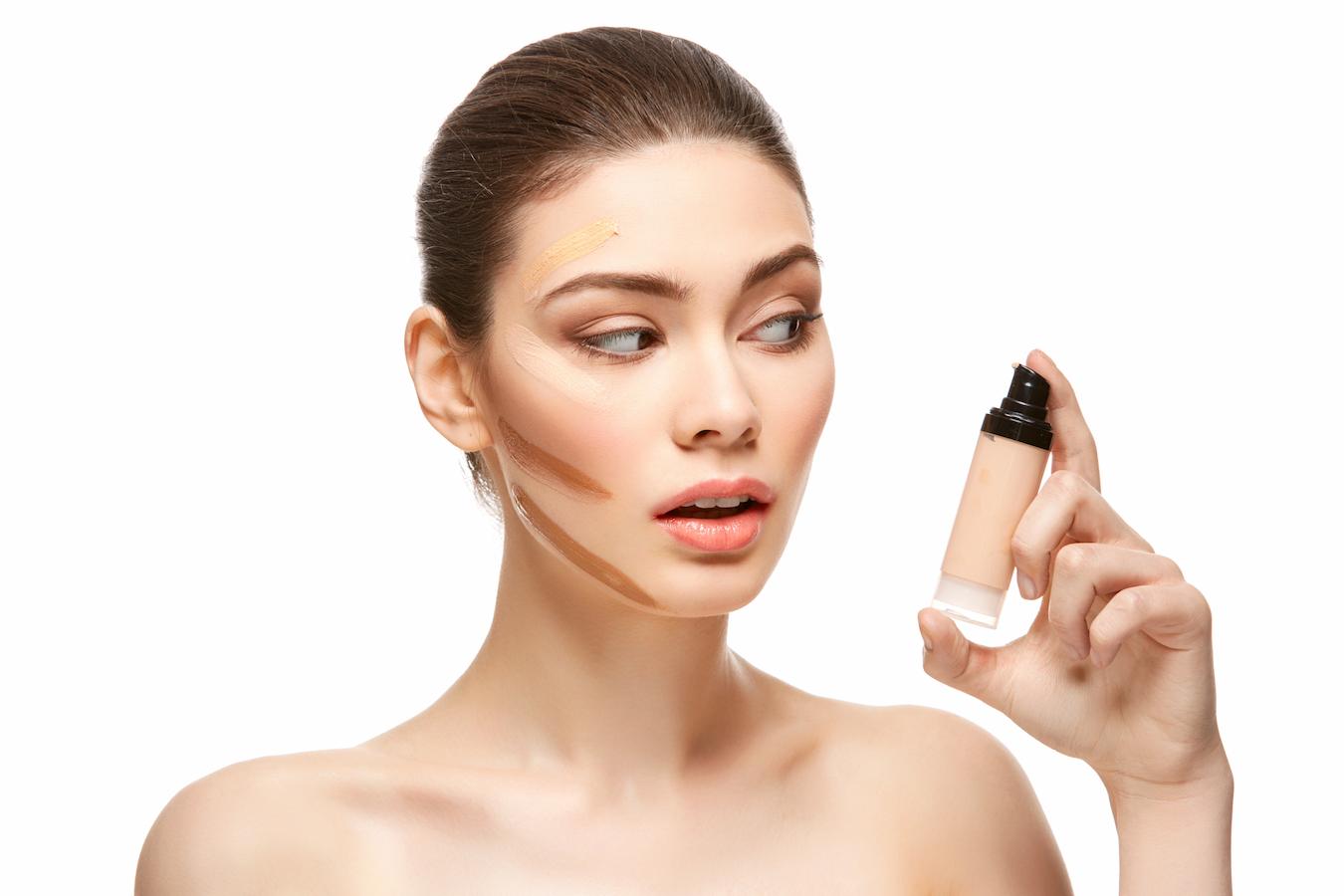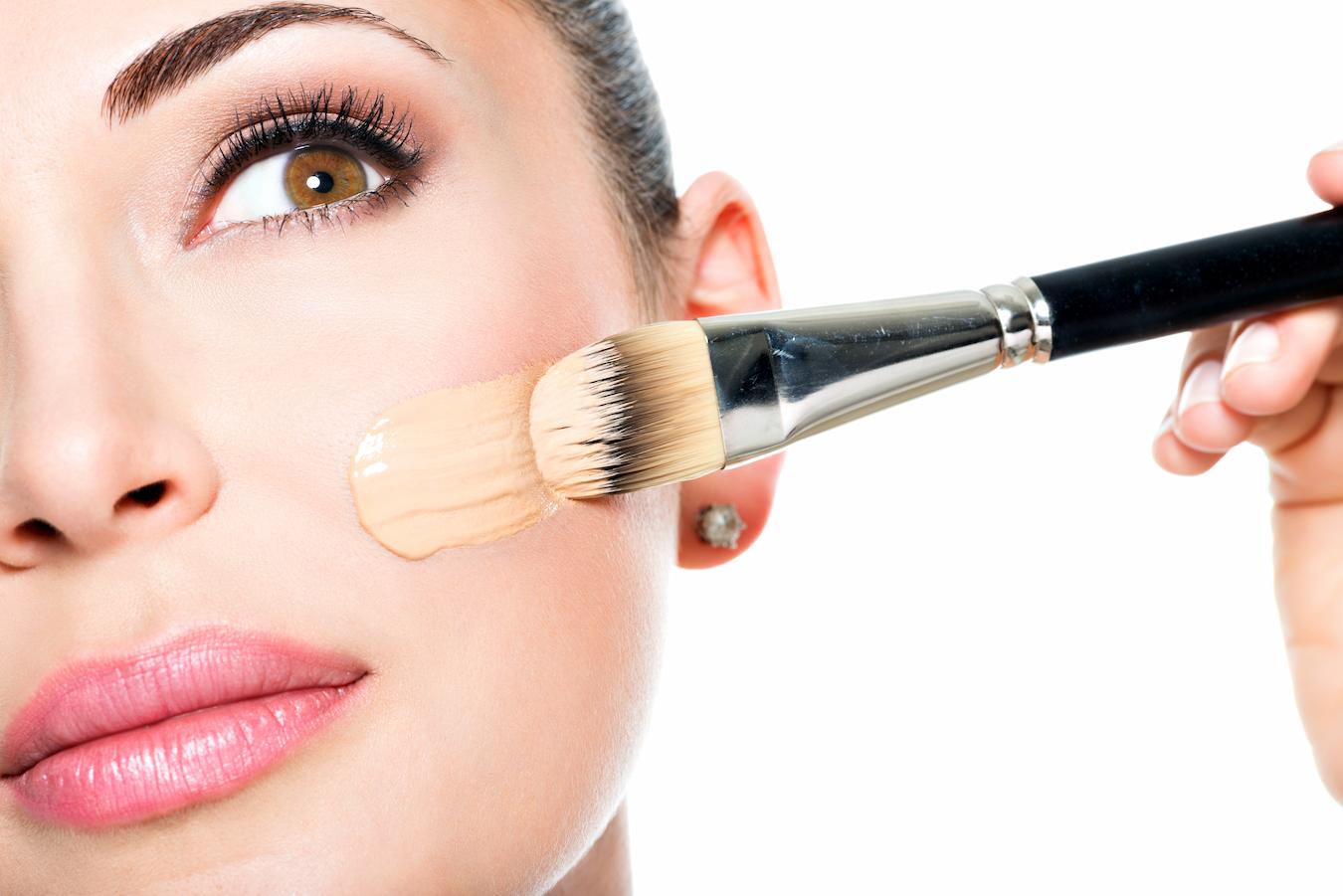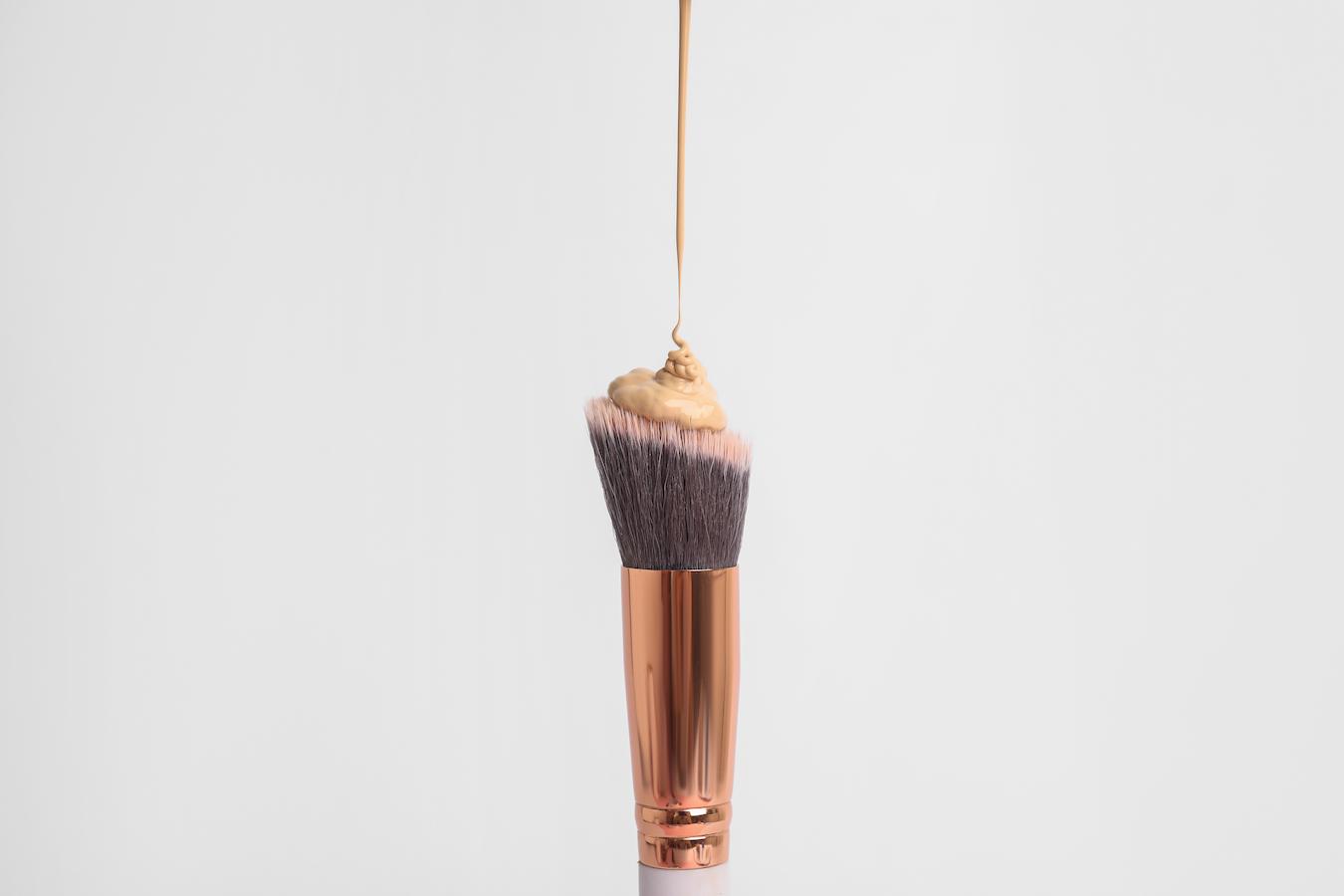How To Apply Liquid Foundation

Applying a foundation is a lot more complex than it looks. You need to get the right tone, consistency, and even the particular ingredients that work well with your skin.
Aside from looking good outside, it’s more important that you also look and feel good on the inside. That is why getting the right liquid foundation for your skin is a must if you want to look your best.
There are a lot of makeup foundations available on the market. One of these is the liquid foundation. Moreover, liquid foundation has different types, too. In that case, which one should you get? And no, you don’t have to be a makeup artist, or have a flawless complexion to wear it properly.
This article will help you identify which liquid foundation will work well on your skin, as well as some tips on how to apply liquid foundation.
See Related: 10 Tips to Keep Your Skin Hydrated
Different Types of Liquid Foundation
There are different types of liquid foundations for you to choose from for your makeup routine. Each one has a different look and feels to it. Choosing which one to get or apply shouldn’t just be based on your preference, but should also account for the skin type that you have. Even if you want to try a specific type of foundation, you should also consider other factors.
Here are some types of liquid foundations:
1. Cream-Like Foundation
A cream-like foundation uses a thick base or formulation to give users substantial coverage. This is ideal to use for people who want a more uniform look or effect.
A lot of people might think that a cream-like foundation isn’t a liquid foundation. However, it still falls under that category. This type of mineral liquid foundation is ideal for people who have normal skin conditions.
Due to its thick consistency, the cream-like foundation provides excellent coverage for skin flaws, discolorations, and other skin problems that you might want to hide. When applied to the skin, it provides a shiny or glossy finish.
2. Water-Based Liquid Foundation
This type of liquid foundation is almost similar to the cream foundation but with a more runny consistency. One of the best things about a watery liquid foundation is its lightweight property. It also contains no oil and silicones which makes it ideal for any skin type, including oily or dry skin.
3. Matte Liquid Foundation
This type of foundation is currently rocking the limelight as more and more users preferred using them because of the many benefits. A matte foundation is just like any other type of liquid foundation, however, it provides a matte-dry or velvety finish.
For people with oily or acne-prone skin, a matte liquid foundation is the most ideal way to prevent further skin complications or pimple breakouts.
4. Dewy Liquid Foundation
A lot of times, people confuse dewy and matte foundations. However, there is a significant difference between the two types of liquid foundation. For one, a matte foundation contains a mattifying ingredient in the form of talc. While most makeups contain talc, what sets a matte liquid foundation apart from a dewy liquid foundation is its pristine or powdery finish.
With a dewy liquid foundation, instead of looking more powdery, it gives off a more moisturized finish to the skin. A dewy liquid foundation works well with any skin type, too!
Proper Application of Liquid Foundation
You can’t just go ahead grabbing liquid foundations and applying them to your skin. Even the application of a liquid foundation has some steps that you need to follow to ensure that you’re not damaging or causing more damage to your skin.

Here are some ways you can apply the different types of liquid foundation, depending on the type of skin that you have.
Cream Liquid Foundation For Oily Skin
Usually, experts don’t suggest using a cream liquid foundation because it contains a very thick composition that may not be well-suited for oily types of skin. However, if you really want to use a cream liquid foundation, you can still do so.
For this type of liquid foundation, you can use a foundation brush or a sponge, but for most people, they prefer a beauty blender. It gives more control to the volume of foundation being applied to the skin.
Start by getting a small amount of liquid foundation on your preferred beauty tool (we suggest applying liquid foundation with a brush) and apply it onto your skin. If you are using a makeup sponge, start by tapping it onto your skin with a dabbing motion to apply the foundation then gently blend until you have achieved an even coverage.
You can also apply foundation under your eyes or other smaller areas using your ring finger. Experts suggest applying first on your forehead, down to the cheeks, then on the chin and neck.
Matte and Dewy Foundation On An Oily Skin
Since this is the most ideal type of liquid foundation to use on oily skin, you can just start by cleansing and moisturizing your skin. It’s a fundamental rule and must always be followed to prevent or lessen skin damage.
After which, you can apply a primer that works well for your skin and apply the foundation in a stippling motion. As much as possible, avoid rubbing or scratching your face.
10 steps that will ensure the health of your skin when applying liquid foundation:
1. Cleanse your skin properly (at the start of the day).
Even if you have just taken a bath, you should still wash your face using whatever product you use to cleanse. You want to have a clean canvas before you apply any makeup.
2. Always moisturize immediately after cleansing.
“I already have oily skin. There’s no need for me to moisturize!” Wrong!
People often misconceive or misunderstand the notion that because they have an oily skin type, there’s no longer any need for them to apply any water-based moisturizer. One of the main reasons why people develop oily skin is not having enough moisture on their skin.
How is this so? Well, if the skin is too dry or has very little moisture, it signals the brain to release more oil on the face, which in most cases, often leads to oily and acne-prone skin. Do you want to have healthy skin both on the inside and on the outside? Moisturize!
3. Use a primer.
Assuming that you have oily skin, you should use a primer that can help you decrease or control extra oil from your face. There are many brands of primer for you to choose from, but choose a primer that suits your skin type. If you can find a mattifying primer, that would be even greater.
4. Blend the liquid foundation using a beauty blender first, then apply it to the skin.
Since you’re already done with the pre-makeup preparations, it’s time to fetch your foundation brush and makeup sponge and blend your cream liquid foundation.

It’s important that you apply a light amount on your face since you already have oily skin. This way, you won’t look like a nightmare when your face starts to oil.
Moreover, if you apply very little cream foundation to your skin, it will help prevent the clogging of your pores. A beauty blender can be an excellent option to use. A beauty blender helps control the amount of foundation you apply to your skin.
5. Use setting spray.
Cream liquid foundations can easily get runny. This is very much evident during hot days or if you do certain activities that could make you sweat.
Plus, assuming that you have oily skin, it’s not impossible to look like melted ice cream at the end of the day if you use a creamy liquid foundation. The solution for this is to use a setting spray.
A setting spray can prevent your makeup from running so easily or from being wiped away too easily.
6. Use liquid foundation for oily skin.
Applying a watery foundation to oily skin is doable, too. However, to get the best results, you have to follow certain steps.
7. Cleanse your face at the end of the day.
An unspoken rule in makeup is to always wash and cleanse your face, no matter how clean it may look. Whether your skin is a healthy, oily, dry, or combination skin type.
You don’t have to follow strict cleansing routines, just find a product that works well for your skin type. It’s also good to note the way you cleanse or wash your face.
Sometimes, skin damages occur because people are handling their face or skin the wrong way. When drying your skin, always pat dry and never rub your face or use rough towels. This will cause abrasions and damage to your skin if you continue to dry your face the wrong way.
8. Moisturize your face (again)!
Similar to cleansing, you should also moisturize your face with a hyaluronic acid moisturizer. There are many benefits to moisturized skin.
For one, if you moisturize regularly, you can reduce the appearance of blemishes and can maintain their natural balance. This, in turn, reduces skin problems such as acne breakouts and oiliness.
9. Use a primer that works well with a watery liquid foundation.
A water-based primer is an ideal primer to use especially if you have oily skin and wants to use a watery liquid foundation. It doesn’t clash with the foundation and is very lightweight on the skin with no cloggings on the pores.
Using a primer is important because it prevents the products you are using to make direct contact with your skin. That way, fewer ingredients are absorbed by your skin. You never know which ingredients are harmful to your skin or not, right?
10. Apply concealer (if necessary).
Since a watery liquid foundation is very lightweight, chances are, it won’t give you much coverage, particularly in areas where you need to hide blemishes, scratches, pimple marks, or other skin issues. Use a concealer if you really want to hide these skin imperfections. If there are concealers that have a matte or powdery finish, use them instead.

Bonus: 13 Best Anti-Aging Oils For Wrinkles According To Experts
Application of Liquid Foundation On Other Types of Skin
As for other skin types, applying liquid foundation almost follow the same steps except that the products to use should be best suited for whatever type of skin people have. It’s important that you know what skin type you have so you’ll know which products to use.
Checking Your Skin Type
Checking your skin type can be done in numerous inexpensive ways. Here are two proven ways to check what skin types you have.
1. Wash, watch, wait, and see
Start by washing or cleansing your face with soap or a cleanser. Then, dry your face with a towel but be careful not to rub your face too much. Watch and wait for at least half an hour before checking on the mirror.
After 30 minutes, go and check yourself in the mirror. If your face shines bright like a diamond (no kidding), then you probably have oily skin.
If your face looks flaky or obviously dry, then, obviously, you have dry skin. However, if your face looks shiny on your T-zone, chances are, you have a combination of oily and dry skin. Lastly, if your face looks moisturized but isn’t oily, then you have a normal skin type.
2. Blotting Sheets
Another effective way of determining your skin type is using blotting sheets. However, you can’t do this as easily as the first step if you have no blotting sheets at home.

But, if you have a piece of blotting paper at home, then, by all means, you can do this step right away. First, you have to cleanse or wash your face.
Pat it dry and wait for at least half an hour before checking. After 30 minutes, press the blotting paper on your T-zone, chin, or nose for a few seconds up to a minute.
After that, hold the sheet against the light to see oil marks. Blotting paper absorbs oil which means if your skin is oily, it will most likely show on the blotting sheet.
Pressing the blotting sheet on your T-zone and seeing a little amount of oil on the blotting sheet means a combination skin type. On the other hand, an oil-less blotting sheet means a normal skin type.
Final Thoughts
Knowing how to apply liquid foundation to your skin may look and feel easy. However, there are certain factors that you need to consider before you actually proceed with the application.
To ensure that your skin looks and feels healthy both on the inside and outside, you have to consider the type of skin that you have, the type of liquid foundation you will use, and the ingredients that they contain. There are many types and brands of liquid foundation available in the market, but choose a brand and type that works well for your skin and your skin tone.
Keep Reading: What Ingredients Are Good For Your Skin?
—
For over 60 years, Viviane Woodard has represented “The Purity of Skincare”. We are the leading beauty brand for skin care products and promote the importance of good skin hydration. Follow us on Facebook, Instagram, Twitter, and Pinterest for skin care tips, product discounts, and more.
